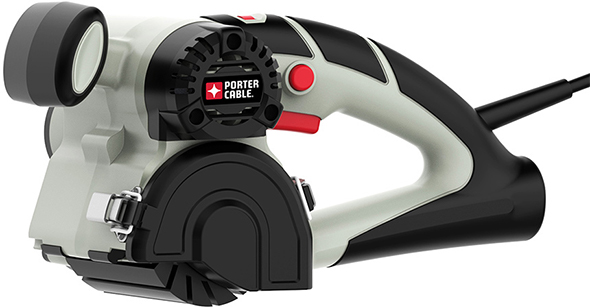Porter Cable Restorer
Porter Cable Restorer is on sale at Lowes for $79, making it a very good buy right now. I’ve had a test sample around here for some time, and although I haven’t had the chance to use it for any big projects, I’ve learned a few things worth sharing.
The Restorer is a licensed Porter Cable product, meaning it’s designed and managed by an outside company, Wellington Tool, run by the inventor Robert Kundel.
I spoke with Robert earlier this month, and he is very passionate about the Restorer. I am convinced that the Restorer is not some gimmick – it was developed as a solution.
1. Porter Cable Restorer – It Can Do Anything!
Well, not anything, but the Restorer is definitely a very versatile tool. Equipped with the right attachment, whether sanding drum, paint and rust remover roller wheel, or one of the accessories currently in development, it can sand, polish, and clean.
2. More Accessories Are on the Way
When I spoke to Robert, he indicating that the initial launch of sanding drums and a coarse paint and rust removal wheel is just the tip of the iceberg, and that they’re working on more accessories.
He seemed very committed to the platform, which gives me confidence as a user or potential buyer.
With the Restorer requiring its own accessories, a manufacturer’s commitment to the product is very important. Who wants to be stuck with a tool that they can’t buy accessories for?
There’s always a risk of being unable to find accessories 5 or 10 years down the road, but I don’t think I would be deterred by this. I got the feeling that the inventor and manufacturer is in it for the long haul.
3. It’s Well-Built and Smooth Running
My short experience with the Restorer has been positive. It seems like a very solid tool, which surprised me a little. I expected the experience to be a little more shaky.
It runs smoothly, and doesn’t seem to bog down.
Accessory changes are easy and tool-free. There are 2 metal latches keeping the wheel cover in place, with one of them captivated so as to act like a hinge.
The design is fairly well-polished, except perhaps the speed selection dial, which is perfectly functional and clear to read, but could stand to be a little better.
4. It Works Superbly with Dust Collection
The inventor described a demonstration where they were sanding or removing rust from something, and how a dust extractor pulled out nearly every bit of dust and debris.
I hadn’t had the opportunity to test this to its limits, but a quick test showed that it does work well with a dust extractor or similar vacuum.
This is still more of a “do your work outside” kind of tool, but I supposed it could be used indoors too, in situations that might alternatively call for a belt sander or random orbit sander.
5. It’s a Surface Restoration and Renewal Tool
Keep in mind that this is not a surface smoother, it’s a surface restoration and prep tool. It’s meant for removing paint, weathered surfaces, and surface rust. Things like that. It’s not a final sanding tool.
It was originally designed for removing rust and scale from beams and pipe prior to painting.
This means it’s a good complement for your existing sanders, and not a replacement.

